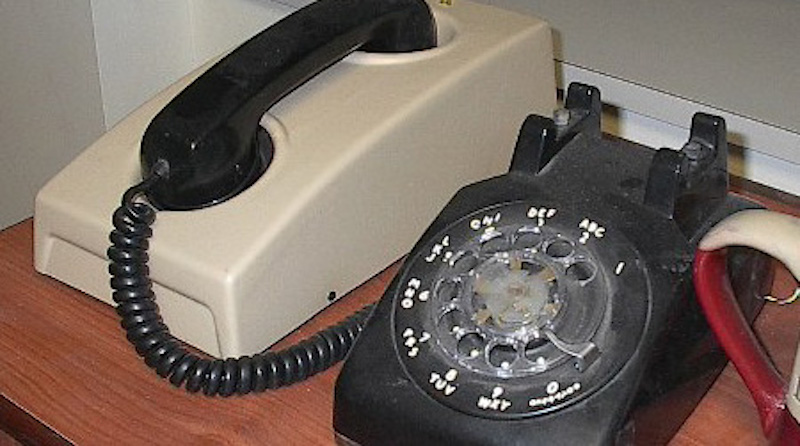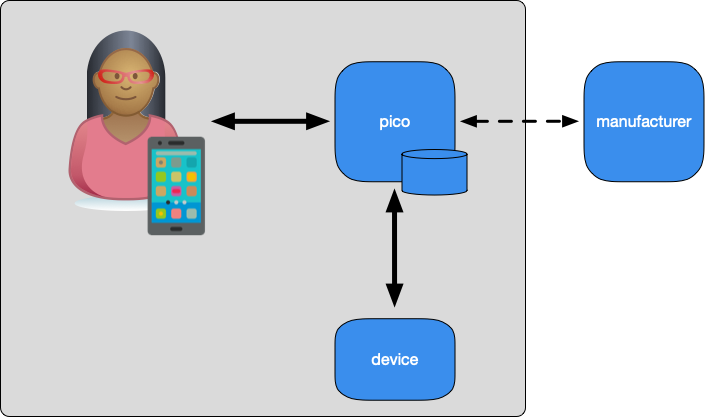Summary
The current model for connected things puts manufacturers inbetween people and their things. That model negatively affects personal freedom, privacy, and society. Alternate models can provide the same benefits of connected devices without the societal and personal costs.

In Peloton Bricks Its Treadmills, Cory Doctorow discusses Peloton's response to a product recall on its treadmills. Part of the response was a firmware upgrade. Rather than issuing the firmware upgrade to all treadmills, Peloton "bricked" all the treadmills and then only updated the ones where the owner was paying a monthly subscription for Peloton's service.
When I talk about Internet of Things (IoT), I always make the point that the current architecture for IoT ensures that people are merely renting connected things, not owning them, despite paying hundreds, even thousands, of dollars upfront. Terms and conditions on accounts usually allow the manufacturer to close your account for any reason and without recourse. Since many products cannot function without their associated cloud service, this renders the device inoperable.
I wrote about this problem in 2014, describing the current architecture as the CompuServe of Things. I wrote:
If Fitbit decides to revoke my account, I will probably survive. But what if, in some future world, the root certificate authority of the identity documents I use for banking, shopping, travel, and a host of other things decides to revoke my identity for some reason? Or if my car stops running because Ford shuts off my account? People must have autonomy and be in control of the connected things in their life. There will be systems and services provided by others and they will, of necessity, be administered. But those administering authorities need not have control of people and their lives. We know how to solve this problem. Interoperability takes "intervening" out of "administrative authority."
The architecture of the CompuServe of Things looks like this:

We're all familiar with it. Alice buys a new device, downloads the app for the device to her phone, sets up an account, and begins using the new thing. The app uses the account and the manufacturer-provided API to access data from the device and control it. Everything is inside the administrative control of the device manufacturer (indicated by the gray box).
There is an alternative model:

In this model, the device and data about it are controlled by Alice, not the manufacturer. The device and an associated agent (pico) Alice uses to interact with it have a relationship with the manufacturer, but the manufacturer is no longer in control. Alice is in control of her device, the data is generates, and the agent that processes the data. Note that this doesn't mean Alice has to code or even manage all that. She can run her agent in an agency and the code in her agent is likely from the manufacturer. But it could be other code instead of or in addition to what she gets from the manufacturer. The point is that Alice can decide. A true Internet of Things is self-sovereign.
Can this model work? Yes! We proved the model works for a production connected car platform called Fuse in 2013-2014. Fuse had hundreds of customers and over 1000 devices in the field. I wrote many articles about the experience, it's architecture, and advantages on my blog.
Fuse was built with picos. Picos are the actor-model programming system that we've developed over the last 12 years to build IoT products that respect individual autonomy and privacy while still providing all the benefits we've come to expect from our connected devices. I'll write more about picos as a programming model for reactive systems soon. Here's some related reading on my blog:
- Life-Like Anonymity and the Poison Web
- The Self-Sovereign Internet of Things
- Relationships in the Self-Sovereign Internet of Things
Our current model for connected devices is in conflict, not only with our ability to functions as autonomous individuals, but also our vision for a well-functioning society. We can do better and we must. Alternate architectures can give us all the benefits of connected devices without the specter of Big Tech intermediating every aspect of our lives.
Photo Credit: modem and phone from Bryan Alexander (CC BY 2.0)




